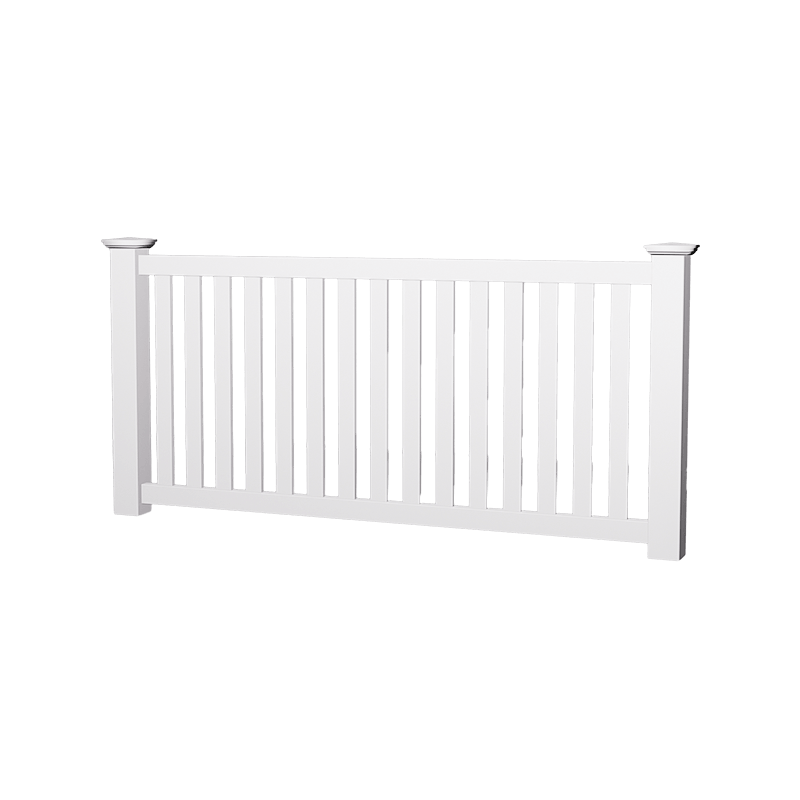 +86-572-8086381 / 8282992
+86-572-8086381 / 8282992  hzjfence1@hzjfence.com
hzjfence1@hzjfence.com  +86-572-8086381 / 8282992
+86-572-8086381 / 8282992  hzjfence1@hzjfence.com
hzjfence1@hzjfence.com 
Apr 02, 2025
PVC railing fences have become a popular choice for homeowners and businesses alike, offering a blend of functionality, durability, and aesthetic appeal. Unlike traditional wooden or metal fences, PVC (polyvinyl chloride) railing systems provide a modern solution that meets the demands of contemporary design while addressing practical concerns like maintenance and longevity.
At first glance, PVC railing fences may resemble painted wood or ornamental metal railings, but they bring a unique set of advantages to the table. For starters, they are crafted from high-quality PVC material, which is inherently resistant to rot, rust, and insect damage—common issues that plague traditional fencing materials. This means that once installed, PVC railings require minimal upkeep compared to their counterparts. There's no need for annual painting, staining, or sealing; simply an occasional rinse with water is enough to keep them looking pristine.
One of the standout features of PVC railing fences is their versatility in design. Available in a wide range of styles, colors, and configurations, these railings can complement virtually any architectural style. Whether you're aiming for a classic white picket fence look or something more modern with sleek lines and darker tones, PVC railing systems can be customized to fit your vision. Some manufacturers even offer options that mimic the texture and appearance of natural wood, giving you the charm of timber without its associated drawbacks.
Durability is another hallmark of PVC railing fences. Engineered to withstand the rigors of outdoor environments, these railings are built to last. They resist fading from UV exposure, won't warp or crack under extreme temperatures, and can handle heavy winds and moisture without deteriorating. This resilience makes them ideal for regions with harsh weather conditions, where other materials might falter over time.

From a safety perspective, PVC railing fences excel as well. Many designs incorporate features such as reinforced posts and sturdy balusters to ensure stability and strength. These railings also meet or exceed building codes for height and spacing, making them suitable for use around pools, decks, porches, and staircases. Their smooth surface eliminates the risk of splinters—a common hazard with wooden railings—and their non-conductive nature ensures they remain safe to touch in all weather conditions.
The environmental aspect of PVC railing fences is worth noting too. While there has been some debate about the sustainability of PVC as a material, advancements in manufacturing processes have made significant strides toward reducing its ecological footprint. Many PVC products are now produced using recycled content, and at the end of their lifecycle, they can often be recycled again. Additionally, because PVC railings last longer than many alternative materials, fewer resources are consumed over time due to replacements.
Installation of PVC railing fences is relatively straightforward, especially when compared to materials like wrought iron or stone. Lightweight yet strong, PVC components are easy to handle and assemble, whether you're tackling the project yourself or hiring professionals. Most systems come with user-friendly connectors and hardware, allowing for quick setup without specialized tools or skills.
Cost-wise, PVC railing fences strike a balance between affordability and value. While the initial investment might be slightly higher than basic wood options, the long-term savings on maintenance and repairs make them a cost-effective choice. Plus, their enduring beauty and performance add curb appeal and potentially increase property value—an important consideration for those planning to sell their home in the future.